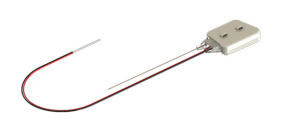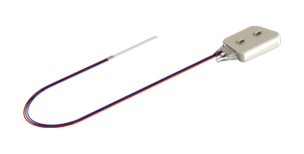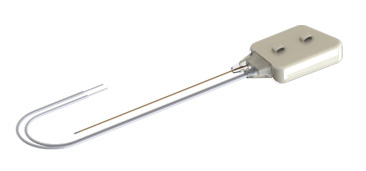At ADInstruments, we’re lucky to be part of an ever-growing community of scientific innovators.
These teams and individuals are constantly pushing the limits, developing new techniques and practices to run their experiments.
Below we highlight just a few high-impact articles from researchers using Kaha telemeters.
Kaha Sciences Telemetry – High-Impact Research:
Naturalistic Variations in Intracranial Pressure
There is a finite amount of room inside your skull. Changes in the amount of tissue, blood, or cerebrospinal fluid inside the skull alter the overall intracranial pressure because there is no spare space. Increased intracranial pressure (ICP) is associated with ischemic stroke, traumatic brain injury, hydrocephalus, and idiopathic intracranial hypertension. But what level of pressure fluctuation is normal, and what is pathological?
A core issue for ICP research is that it is both difficult and dangerous to measure. Human baselines mostly come from patients who needed ICP monitoring or lumbar punctures as part of other treatments, which introduces bias. This incomplete view of ICP makes it difficult to determine if any ICP fluctuation observed is normal, a sign of developing pathology, or a response to treatments.
Long-term ICP studies in healthy humans are too dangerous to attempt with current technology, but we can get an idea of the kinds of events that impact ICP from animal studies. Eftekhari et al. explored long-term ICP fluctuations by recording uninterrupted ICP data from rats for 50 days. Recording 1200 hours of continuous data was made possible by using wireless telemetry.

ICP observation was segmented into three time periods: the surgical recovery period (days 0-8), the physiological period (days 9-26), and the experimental period (days 27-50), with particular interest being paid to the physiological period.
The main time point of interest was the physiological period, where the animals had recovered from surgery and were living without any interventions. The main observations made by Eftekhari et al. were that ICP cycles were impacted by time of day, and by stress, with mean amplitude going up during the active dark period and mean ICP consistently higher for the less-stressed co-housed rats. Weight gain was also found to impact ICP, with normal weight gain during the physiological period associated with a progressive increase in ICP.
Those are just a few of the findings. We highly recommend you read through Eftekhari et al.’s paper to learn more about:
- The effect of anesthetic on ICP.
- Respiratory and cardiovascular components of ICP cycling.
- The impact of head and body position on ICP.
- The regularity of B-waves during surgical recovery.
Recording uninterrupted ICP for 50 days is a huge achievement. This work highlights the importance of long-running observational studies in developing a more complete understanding of complex physiological phenomena. The better we understand the phenomenon, the better equipt we are to differentiate the normal from the pathological.
Telemeter Used:
Kaha Pressure Biopotential Telemeter »
Kaha Pressure Telemeter »

Publication:
Eftekhari, Sajedeh, et al. “Long-Term Monitoring of Intracranial Pressure in Freely-Moving Rats; Impact of Different Physiological States.” Fluids and Barriers of the CNS, vol. 17, no. 1, 2020.
https://doi.org/10.1186/s12987-020-00199-z
Oxygen, Carbon Dioxide, and the Circadian Clock
Animal bodies are governed by circadian rhythms. These, roughly, 24-hour cycles regulate behaviors like sleep, core physiological processes like blood pressure, and cellular functions like genome expression and protein synthesis. Through complex interactions between external signals and internal autonomous cellular control systems, the rhythms are adjusted to keep the body in sync with the world around it.
However, not every system is on the exact same cycle. Some organs or systems will regulate themselves according to a particular signal, for example light exposure, which might be out of sync with a system regulated by eating patterns. In this article Adamovich et al. explore which signals are core to the regulation of respiration, and whether oxygen consumption and carbon dioxide release can be desynchronized from one another.

Respiration is already known to change over the course of a day, increasing while the animal is active and decreasing during rest. Using an implantable Kaha Tissue Oxygen Telemeter, along with respiratory and locomotor measures, Adamovich et al. set out to answer three core questions:
- What regulates the daily oscillations in oxygen consumption and tissue oxygenation?
- Are there daily rhythms in carbon dioxide release and what controls them?
- Can oxygen and carbon dioxide rhythms be disentangled, and what are the potential molecular downstream effects?
Using clock mutant mice with circadian expression of core clock and clock-controlled genes largely diminished, the team observed the rhythms of oxygen and carbon dioxide. If the genetic clock components purely controlled respiratory rhythms, Adamovich et al. hypothesized that drift would be observed. Instead, both oxygen and carbon dioxide cycles remained intact, increasing at night when the mice were most active, and decreasing while they rested during the day. However, when food availability was altered to be accessible only during the day, the rhythms moved. Taken together, this indicated that while light-dark cycles may help to control oxygen and carbon dioxide cycles, feeding rhythms have a more pronounced effect.
Examining this effect further in wild-type animals teased out slight differences in oxygen cycling vs carbon dioxide cycling. Carbon dioxide responded more closely to feeding, while oxygen cycles closely aligned with periods of increased activity. So, not only can oxygen and carbon dioxide rhythms be altered but they can also be disentangled from one another.
This article is well worth exploring. Adamovich et al. go on to describe:
- The downstream cellular and genetic impacts of phase shifting
- How phase shifting goes on to reset the phases of other bodily clocks
Telemeter Used:
Kaha Tissue Oxygen Telemeter »

Publication:
Adamovich, Yaarit, et al. “Oxygen and Carbon Dioxide Rhythms Are Circadian Clock Controlled and Differentially Directed by Behavioral Signals.” Cell Metabolism, vol. 29, no. 5, 2019, pp. 1092–1103.e3.
https://doi.org/10.1016/j.cmet.2019.01.007.
Sympathetically Mediated Hypertension
Hypertension, or high blood pressure, is a major contributor to mortality worldwide. While hypertension itself is non-symptomatic, it is associated with an increased risk of heart disease, stroke, neurodegeneration, kidney failure, and other diseases. Numerous organ systems are involved in regulating blood pressure, and multiple neural regions contribute to the development and maintenance of hypertension. How these neural mechanisms influence hypertension is not well understood and requires detailed investigation.

The organum vasculosum of the lamina terminalis (OVLT) is a substructure of the hypothalamus within the lateral ventricles. It lacks a complete blood-brain barrier, so neurons within the OVLT are exposed to factors within the cerebrospinal fluid of the ventricles. This increased access to soluble factors in the CSF enables the OVLT to regulate thirst, and also make it a potential source of hypertension.
Stocker et al. aimed to investigate whether chronic and acute activation of the OVLT could produce hypertension, and how the sympathetic nervous system might be involved.
Chronic activation of the OVLT was examined by lacing the food and water of rats with sodium chloride for seven days. Hypertension set in around day 3, with arterial blood pressure increasing independently from the amount of fluid that rats had consumed. This demonstrated that hypertension was not simply a function of increased water intake, but of some underlying process. After the salt was removed from their diet, it took a further three days for hypertension to resolve, suggesting that the maintenance of hypertension occurs without a constant stimulus to support it.
Acute activation was achieved using optogenetics and measured using implanted Kaha SNA and
Pressure Telemeters. This highly targetted activation of the OVLT increased arterial blood pressure and activation of renal, splanchnic, and lumbar sympathetic nerves; demonstrating a relationship between OVLT activation, sympathetic nervous system activation, and an increase in arterial blood pressure.
Telemeters Used:
Kaha SNA and Pressure Telemeter »

Publication:
Stocker, Sean D., et al. “Activation of the Organum Vasculosum of the Lamina Terminalis Produces a Sympathetically Mediated Hypertension.” Hypertension, vol. 79, no. 1, 2022, pp. 139–49.
https://doi.org/10.1161/hypertensionaha.121.18117
For more information about Kaha Sciences telemeters, or to discuss your specific research application please contact your nearest ADInstruments support representative.
Related resources:
High-Impact Telemetry Series: The Neuroprosthetic Baroreflex, Hypertension after Stroke,
and the Cardiac Impacts of Epilepsy »
Four benefits of telemetry for research »
Kaha Telemeters Cardiovascular Applications »

